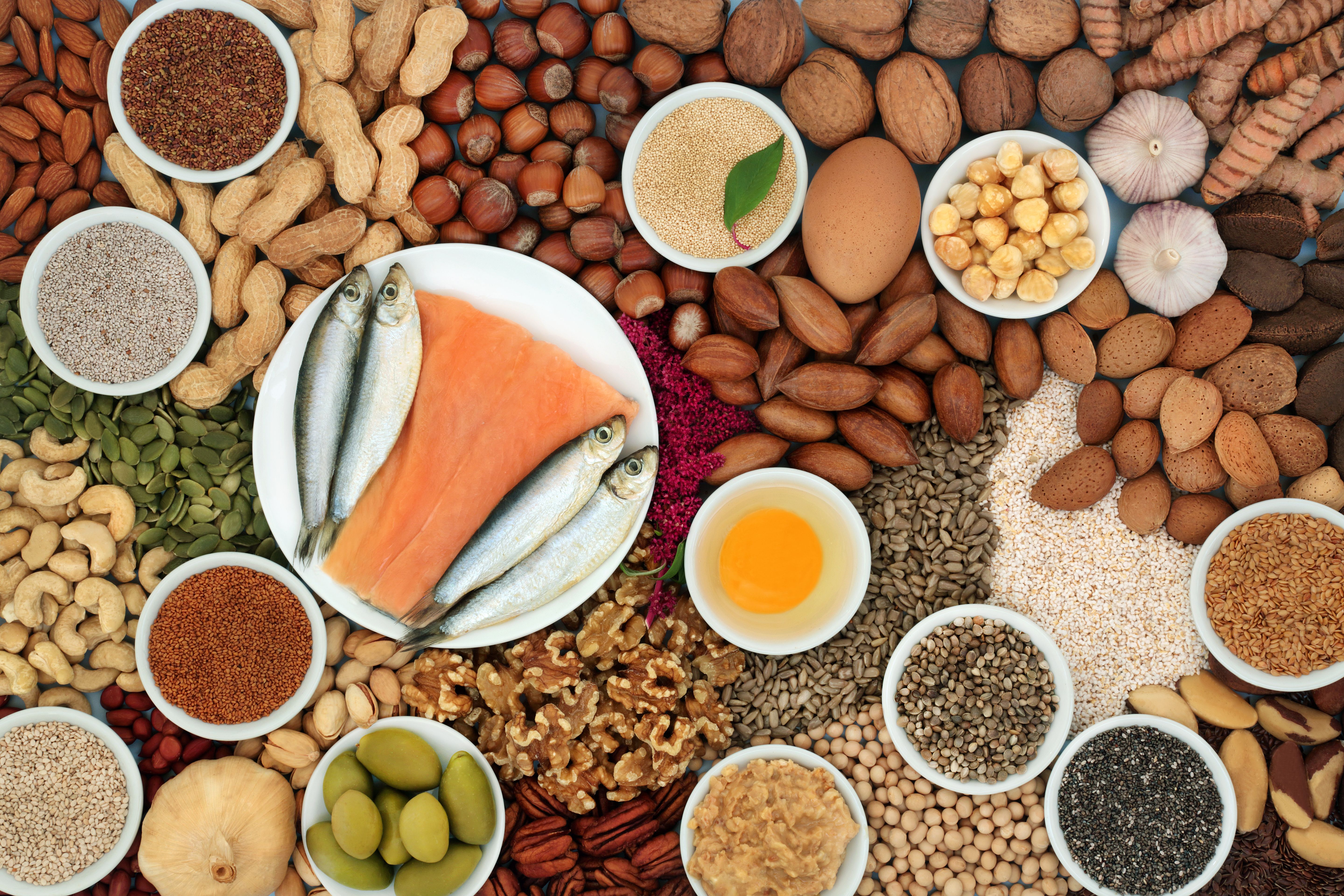Flow-Injection MS Selectively Ionizes Oxidized Triacylglycerols Versus Non-Oxidized Precursors
While lipid oxidation in food is a serious problem, lipid species in both oxidized and non-oxidized forms at varying concentrations make detection and identification of the less abundant species difficult.
Research scientists from Wageningen University & Research in The Netherlands have recently released a study that deployed flow-injection mass spectrometry (MS) for the selective ionization of oxidized triacylglycerols (TAGs) in food products compared to their non-oxidized precursors (1). Mobile-phase additives and ion source settings, the authors said, helped to increase selectivity in this research effort to measure the deleterious effects of oxidized TAGs on human health.
Healthy heart food ingredients high in lipids containing unsaturated good fats for low cholesterol levels with nuts, seeds, dairy, fish, vegetables, legumes and grain. Top view. | Image Credit: © marilyn barbone

The five-author study, published in the journal Analytical and Bioanalytical Chemistry, suggests that lipid oxidation in food should be closely monitored because it can cause the formation of compounds that are potentially toxic, or at the very least, can reduce the shelf life of a product (1). Liquid chromatography coupled to mass spectrometry (LC–MS) is the hyphenated method that is often preferred for monitoring oxidized lipid formations, but coelution of lipid species in both oxidized and non-oxidized forms, at different concentrations, can be a hindrance to detecting and identifying the less abundant species, according to the authors.
In lipid-rich food products, lipid oxidation can cause the quality of the food to deteriorate. This can be observed with the presence of off-flavors in the product(s) in question, but can also more seriously contribute to cardiovascular disease or inflammation of the kidneys, liver, lungs, or gut (1). Even so, difficulty heretofore in detecting trace levels of oxidized species within common diets, to prepare those species for further analysis, means the true effects of lipid oxidation within the human body are still somewhat of a mystery.
Flow-injection MS was seen as preferable to LC–MS in this experiment because it is faster, allows for nearly unlimited acquisition time with constant concentration, and eliminates variations in mobile-phase concentration that would otherwise cause the ionization efficiency of individual lipids to vary (1). However, both selective ionization and ion suppression are evidence of challenges associated with this approach. The researchers theorized that if certain ionization conditions—namely sheath gas temperature, capillary voltage, and nozzle voltage—were properly tuned, the resulting high selectivity toward oxidized species would resolve interference by non-oxidized species of similar masses.
By using sodium acetate (NaOAc) as a solvent additive at medium concentration, combined with the ion source settings previously specified, the research team found that they were able to achieve successfully increased ion selectivity for all species being investigated (1). Analysis of variance (ANOVA) was additionally performed, the results of which confirmed that a universal set of optimum conditions can be identified even if the major factors that influence selectivity (when it comes to oxidized versus non-oxidized compounds) depend primarily on the specific compounds of interest.
The researchers concluded that their findings represented a “significant” step forward in identifying oxidized TAGs against non-oxidized ones—selectivity which they said might not quite be sufficient for direct analysis, but would ease prior requirements on the sample preparation and separation stages in similar investigations.
Reference
(1) Lazaridi, E.; Hennebelle, M.; Hollebrands, B.; Hageman, J.; Vincken, J.- P.; Janssen, H.- G. Selective Ionization of Oxidized Lipid Species Using Different Solvent Additives in Flow Injection Mass Spectrometry. Anal. Bioanal. Chem. 2023. DOI: 10.1007/s00216-023-04988-x
Study Explores Thin-Film Extraction of Biogenic Amines via HPLC-MS/MS
March 27th 2025Scientists from Tabriz University and the University of Tabriz explored cellulose acetate-UiO-66-COOH as an affordable coating sorbent for thin film extraction of biogenic amines from cheese and alcohol-free beverages using HPLC-MS/MS.
Quantifying Microplastics in Meconium Samples Using Pyrolysis–GC-MS
March 26th 2025Using pyrolysis-gas chromatography and mass spectrometry, scientists from Fudan University and the Putuo District Center for Disease Control and Prevention detected and quantified microplastics in newborn stool samples.
Multi-Step Preparative LC–MS Workflow for Peptide Purification
March 21st 2025This article introduces a multi-step preparative purification workflow for synthetic peptides using liquid chromatography–mass spectrometry (LC–MS). The process involves optimizing separation conditions, scaling-up, fractionating, and confirming purity and recovery, using a single LC–MS system. High purity and recovery rates for synthetic peptides such as parathormone (PTH) are achieved. The method allows efficient purification and accurate confirmation of peptide synthesis and is suitable for handling complex preparative purification tasks.








